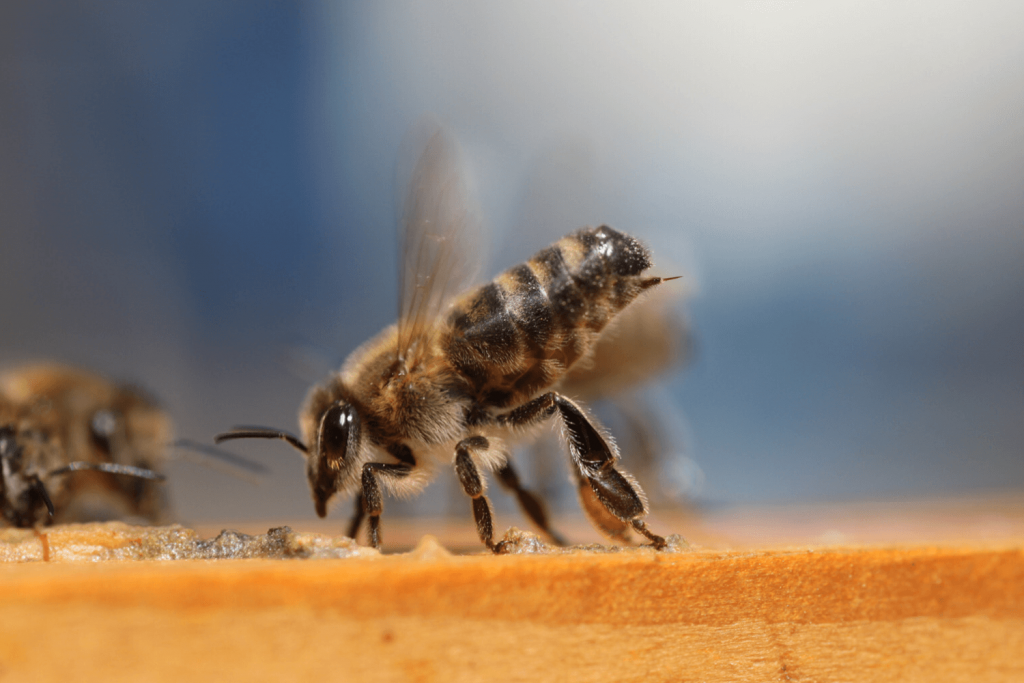What to do When a Bee Swarm Attacks
There was this one time I was babysitting some neighbour’s kids. At some point, I decided to engage them in an interesting topic. “What would you do if a swarm of bees attacked you?” I asked my enthusiastic audience.
“I would jump into water,” the first one declared matter-of-factly.
“I would stand statue and try not to breathe,” the second one swore. We must have given her the most pitiful stare for she quickly defended her answer, “That way, they won’t smell and trace the intruder.” A brilliant lady this one- bees are attracted to carbon dioxide.
“What about you, darl?” I asked the third one, and the youngest in the group.
“I would lie low. Then I would start rolling on the ground.”
Both her siblings gave her the sort of blank smile reserved for the slow-witted. “They won’t know where to sting,” she confidently supported her hypothesis.
Children learn from adults. And from their responses, you can tell that most of us hardly know the right safety tips for a bee swarm attack. We can confidently recite the procedures followed when someone faints. Most of us can even chorus out the medical reasons behind a faint. Concerning bee attacks, however, many still live under the rocks.
For instance, if a swarm of bees were to attack a group of people, why would those dressed in dark-coloured clothing get more stings? Shouldn’t the bees be attracted to those in bright-coloured clothing just like they are attracted to flowers? Also, can you medically explain what is happening in your body while you wail in pain? How would you help someone being attacked by bees? How is treatment done? What makes those allergic to bee stings a special case? So many questions.
For this reason, today’s topic cannot afford to delay an extra minute. However, we won’t just dive into the topic right away -and, yes, I’ve heard your eyes rolling out of frustration; you seated at the corner. Well, in order to have all our questions answered, we must begin by mapping out the topic as follows:
- Precaution measures
- The do’s and don’ts during a bee swarm attack
- Tracking the body’s responds to bee venom
- Treatment
That said and done, let’s bring the topic home.
PRECAUTION MEASURES
- Shop for hair shampoos and body sprays carefully. That signature cherry/strawberry perfume that still reminds everyone you passed along that path two days down the line, could also help a bee track you down and signal its hive-mates to come for a feast of the illusional nectar.
- Pay attention to places bees are likely to make a hive. This includes animal shelters and trees around your residence. If the bees will be posing danger to people and animals that stay outside like horses, have them removed.
- Mind your clothing. Most animals that bees consider enemies are dark-coloured. Talk of bears and badgers. It is now self-explanatory why in a group of people, those dressed in lighter clothing get stung less.

Supposing you follow all precaution measures, but are still unfortunate enough to find yourself being attacked by bees, what next?
THE DO’S AND DON’TS
- Pay attention to that one bee that keeps bumping into you– it could be a signal that you have trespassed a hive territory and the rest of the swarm is on its way. And no, do not swat the bee with the newspaper you were reading before it started distracting you. Worse still, do not fling your arms at it in attempt to get it off you. You will make the bee have the false sense that it’s dealing with an extremely aggressive enemy and it will begin sending off “help me” signals. Your swatting might even injure it, and a wounded bee releases a greater amount of these signals. What follows next is an acute display of loyalty to the hive, with the rest of the swarm responding to the alarm pheromones being released by this bee. In the same way that a cobra remains enchanted by a snake charmer, so are bees to their queen. More and more bees will come after you and will only back off once the threat has been eliminated. We can conclude that sometimes being the bigger person during a conflict does more harm than good.
- Do not stand still in the sense that you are fooling the bees. Standing still is not a sure bet, as much as it has worked for some people.
- Do not jump into water. Water does not wash off alarm pheromones- so the bees will still be on your case. Furthermore, they are smart enough to know you need air and will continue to attack as soon as you resurface from the water. However, in case jumping into water seems to be your only available option, do not resurface for air at the same spot you dived in at. Furthermore, you should try to swim off as calmly as you can because like most humans, bees dislike chaos. Thrusting the water around will only upset them more.
Having saved the best advice for last…
- Run like crazy. Just like soldiers, police officers and firemen, confronting an unpleasant situation head-on is the norm of the day in the medical world. However, attempting this during a bee swarm attack would be akin to signing your death sentence. Running away is therefore the best option natural instinct can offer. For once, you will be the medic who runs away. Although this option might make you feel like you are trying to outrun a small arrow flying at 20mph, just keep going till you find a safe shelter that has a lockable door, e.g., a house or car. Few bees might follow you inside, but a bee can only sting you once. Only come out once the swarm leaves. While running, cover your face with your hands or with a clothing, say a sweater, in such a manner that you can still see where you are heading. Do not run in a zigzag manner- it will only make you slower. In my wildest imagination, if bees were to attack me, I would race off like Sonic the Hedgehog while yelling at the top of my lungs, “Not me demon!”. If I get indoors but the bees still manage to catch up before I can lock the door, I will grab the vacuum cleaner. I will then proudly watch my Venus fly traps flourish with nitrogen. Someone might say bees are like natural coaches- they will help you tap into that sprinting potential you never knew you had. For more info on bee safety, you can follow this link here
HOW THE BODY RESPONDS TO BEE VENOM

Melittin, the main component in bee venom, increases the release of histamine from mast cells near the affected area. Histamine then causes inflammation by:
- Dilating blood vessels and consequently increasing the amount of blood flowing to that area. This results in rednessand heat.
- Increasing vascular permeability and promoting leukocyte adhesion to the vascular epithelium. Increased permeability results in plasma seeping through and leukocyte infiltration to the affected area. Accumulation of fluid in the affected area results in swelling. Swelling of tissues against nerve ending results in transmission of pain signals to the brain. Furthermore, melittin itself is a chemical that stimulates pain receptors.
- The combination of these factors causes tissue damage and loss of function.
Thus, the five cardinal signs of inflammation are manifested: –
- Rubor (redness)
- Calor (heat)
- Tumor (swelling)
- Dolor (pain)
- Functio laesa (loss of function)
TREATMENT
- Melittin readily dissolves in water. Since our bodies are 60% water, bee venom spreads rapidly. It is therefore important to remove the stingers as soon as possible. Avoid trying to pull them off with your fingernails as this may embed them deeper in the skin. A flat surface e.g., a credit card should be used to remove the stingers. If this is unavailable, scrap them off with your fingernails.
- Clean the affected area using soapy water to reduce infection.
- Place some ice on the affected area to reduce pain and swelling.
- Apply antihistamines such as chlorpheniramine and diphenhydramine to that area. This medication will inhibit the melittin-induced release of histamine, consequently reducing the inflammation signs stated above.
- An allergy occurs when the body overreacts to an otherwise harmless antigen. Immediate medical attention should be sought for victims allergic to bee stings because they are at risk of anaphylactic shock. Allergic patients will manifest:
- Blocked airways thus the patient wheezes and coughs.
- A rapid but shallow pulse.
- Skin rash.
- Nausea/ vomiting etc.
Clinically, a sudden decrease in blood pressure can be identified. Anaphylactic shock is life-threatening. The patient should be injected with epinephrine immediately.
N/B: If you notice another person being attacked, but they seem unable to run away, cover them with a blanket or anything else available.
Kindly check out our previous blog post on Emergency Contraceptive Pills if you haven’t already. What are your thoughts on todays topic? Leave a like, share and comment down below.





13 Comments
Amazing piece doc, i am now more than equipped to handle a swarm attack! Bees, try me now
You plan on giving Usain Bolt a run for his money ????great!
Tips much needed especially with the increase in bees near the LT area????
????????????we got you covered
Great Insight. Very informative!!
Thank you for the kind words Daktari????
Another day nkiwatch news, there was this recrutement of KDF in Mombasa were bees attacked the soldiers and the recruits.???? Its not funny but seeing a KDF run like hell made me burst into laughter….. Bees are no joke btw..
Nice piece Kimaiga????
Some witchdoctors use them to catch thieves????heard of that one?
Very nice piece Sarah kim.
Checkpoint…i think Chlopheniramine cream haiko on market.. anyone cna also comment on this if kuna Chlopheniramine cream.
Maybe something to apply on the affected are could possibly be Intamine cream.. it’s good one.
Or get hydrocortisone injection,or some other antihistamine tablets..likes of cetrizine, Celestamine,foxefenadine etc
Oh, yea…great observation Doc!
Chlorpheniramine is a first generation antihistamine. It won’t cross membranes easily.
If Chlorpheniramine is to be used, however, it will be taken orally. Same with Diphenhydramine.